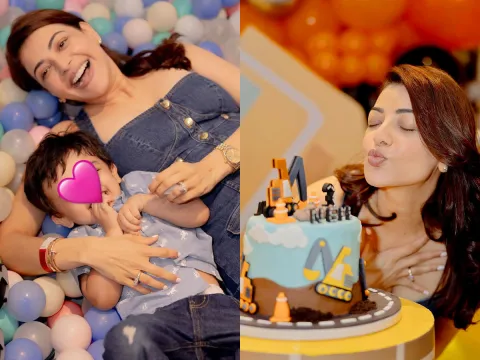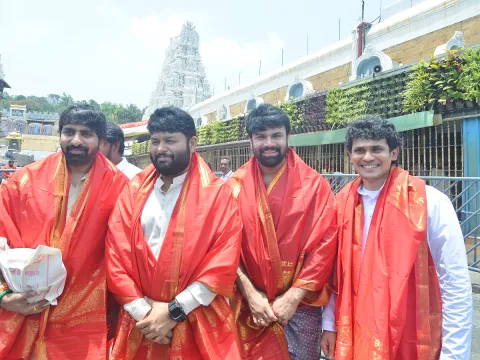
it moves towards the inner medulla!
A person is suffering with the following symptoms.
SENIOR INTER
(Human Anatomy, Physiology I-V)
l In the syllabus of Senior Inter zoology, 5 units are allotted for Human Anatomy and Physiology along with reproductive system and reproductive health.
l Nearly 50 % of questions of total 40 questions in EAMCET ZOOLOGY 2014 will be given in Second year syllabus.
l It means the range of questions will be asked from these 5 units is 10 - 12.
l Every system belongs to human being will get one question compulsory.
l Students should follow the content given in academy text book thoroughly and will get full marks.
1. A person is suffering with the following symptoms.
a) Buffalo hump
b) Pendulous abdomen
c) Over deposition of glycogen in liver
d) breakdown of muscle proteins
e) spindly arms and legs
Identify the syndrome/ disease and the reason for that conditions
1) Addison's disease - hyper secretion of aldosterone
2) Cushing's syndrome - over production of glucocorticoids
3) Acromegaly - over secretion of growth hormone in adult stages
4) Myxedema - hypothyroidism
2. Read the following related to the action of epinephrine on liver cells during glycogenolysis...
A) Activation of enzyme 'Phosphorylase'
B) Activation of Protein kinase - A
C) Production of cAMP from ATP
D) Activation of adenylatecyclase
E) Formation of Glucose - 6 phosphate
F) Production of glucose.
G) Binding of G protein of cell membrane to GTP
Identify the correct order of various events
1) G® D® C® B® A® E® F
2) D® G® C® A® B® F® E
3) G® C® D® A® B® E® F
4) A® D® C® G® E® B® F
3. Read the following
I) Plays an important role in the regulation of 24hr. diurnal/ circadian rhythms
II) Influences erythropoiesis
III) Regulates menstrual cycle
IV) Increases calcium level in blood
V) Maintains water and electrolytic balance in the body
VI) Regulates basal metabolic rate (BMR)
Which among the above are related to Calorigenic hormone?
1) II, V & VI 2) I, II & IV
3) II, III & V 4) III, IV & V
4. Match the following regarding the circulatory system of human beings.
Group-A
A) Eustachian valve
B) Valve of Thebesius
C) Tricuspid valve
D) Mitral valve
E) Semilunar valve
Group-B
i) Coronary sinus -- right atrium
ii) Left atrium -- Left ventricle
iii) Post caval vein-- Right atrium
iv) Left ventricle-- Systemic arch
v) Right atrium -- Right ventricle
1) A= iii; B= i; C= v; D= ii; E= iv
2) A= ii; B= i; C= v; D= iii; E= iv
3) A= iii; B= ii; C= v; D= iv; E=i
4) A= iii; B= iv; C= v; D= i; E=ii
5. Read the following
A) Low PCO2
B) High H+ concentration
C) High PCO2 D) High PO2
E) Lower temperature
F) Low PO2
G) Lesser H+ concentration
Which among the above shift Oxyhaemoglobin dissociation curve towards 'Y' axis
1) B, D, E, G 2) A, C, F, G
3) A, D, E, G 4) C, D, F, G
6. The parts of sarcomere with both thick and thin filaments are present in..
1) I band on either side of Z line
2) Hensen's disc on either side of M line
3) The region between A band and I band
4) A band on either side of H zone
7. Read the following.
A) Valve of Thebesius
B) Aortic valve C) Mitral valve
D) Tricuspid valve
E) Pulmonary valve
F) Eustachian valve
Which among the above regulate the flow of oxygenated blood in human beings
1) A, C and D 2) B and C
3) B, D and E 4) A, D, E and F
8. Study the following.
A) Mammary duct B) Alveoli
C) Mammary Ampulla
D) Mammary tubule
E) Lactiferous duct
Arrange the above in correct path of passage of milk from mammary glands.
1) B®A®D®E®C
2) C®B®A®D®E
3) B®D®A®C®E
4) A®B®C®D®E
9. Which of the following condition enforces the occurrence of inspiration?
1) Intrapulmonary pressure is equal to the atmospheric pressure
2) Intrapulmonary pressure is less than the atmospheric pressure
3) Intrapulmonary pressure is higher than the atmospheric pressure
4) Intra-pleural pressure becomes equal to the intra-alveolar pressure.
10. Read the following
I) Hardest substance in the body is secreted by amelob-lasts of ectodermal origin.
II) Odontoblasts of mesodermal origin secrete dentine.
III) Frenulum is a fold of tissue that attaches the tongue to floor of the oral cavity.
IV) Uvula is the hanging part of hard palate into the pharynx.
V) Palate facilitates the processes like chewing and breathing to occur simultaneously.
Which of the above are incorrect?
1) IV only 2) III & IV
3) II, IV & V 4) I, III & IV
11. Assertion (A): Concentration of renal fluid gradually increases in descending limb of loop of Henle as it moves towards the inner medulla.
Reason (R): Descending limb of loop of Henle is almost impermeable to water and electrolytes.
1) 'A' is false but 'R' is true
2) Both 'A' and 'R' are true but 'R' doest not explains 'A'
3) Both 'A' and 'R' are true and 'R' explains A
4) 'A' is true but 'R' is false
12. Read the following and identify the correct combinations
A) Pancreozymin -- relaxation of sphincter of Oddiand gall bladder.
B) Enterocrinin -- stimulates the secretion of succus entericus.
C) Progesterone -- stimulates the contraction of uterus.
D) Insulin -- slows down gluconeogenesis.
E) Parathormone -- stimulates the action of osteoblasts for bone resorption.
F) Melatonin -- maintains sleep - wake cycle.
1) A, B, D & F 2) B, D & F
3) C, D & E 4) A, C, D & F
13. Identify the correct statement among the following
1) Antibodies of the group Ig D are responsible for allergies.
2) Ig M antibody is pentameric while Ig E and Ig G type antibodies are dimeric.
3) Paratope belongs to antibody while epitope is related to antigen.
4) Eosinophils and lymphocytes remove antigen-antibody complexes.
14. During which of the following phase of menstrual cycle in female human beings peak level of both LH and FSH occurs?
1) Follicular phase
2) Luteal phase
3) Menstrual phase
4) Ovulatory phase
15. Assertion (A): Placenta in human beings is considered as deciduate type.
Reason (R): Placenta is cast off with loss of embryonic membranes and encapsulating maternal tissues and cause extensive haemorrhage.
1) Both A and R are true but R doesnot explains A
2) Both A and R are true and R is the correct explanation to A
3) A is true but R is false
4) A is false but R is true
16. Hormone releasing Intra Uterine Devices for contraception are
1) Cu T, LNG - 20
2) Lippes loop, Multiload 375
3) Progestasert, LNG -20
4) Progestasert, Cu 7
17. Correct expression among the following is ..
1) Capacitation: Cellular differentiation in morula.
2) Induction: Development of notochord in response to neural plate.
3) Compaction: Activation of spermatozoa in female genital tract.
4) Delamination: Formation of hypoblast from embryonic disc.
18. Fluid of which gland in male human beings will acts as a flushing agent that washes out urinary residues that remain in the urethra before the ejaculation of semen?
1) Prostate gland
2) Skene's gland
3) Seminal vesicle
4) Cowper's gland
19. Read the following and identify the incorrect one
1) Natural passive acquired immunity - through colostrum
2) Artificial active acquired immunity - by vaccination
3) Natural passive acquired immunity - by antivenin
4) Natural active acquired immunity - by chicken pox
20. Cranial nerves which innervate the muscles of eye ball are
1) Optic, oculomotor, trochlear nerves
2) Pathetic, oculomotor, abducens nerves
3) Oculomotor, trigeminal, hypoglossal nerves
4) Trochlear, trigeminal, abducens nerves
21. Correct sequence for blood flow through the heart and lungs related to body parts
1) Right atrium ® Left atrium Lungs ® Left ventricle ® Left atrium ® Body parts
2) Right atrium ® Right ventricle ® Lungs ® Left ventricle ® Left atrium ® Body parts
3) Right atrium ® Right ventricle ® Lungs ® Left atrium ® Left ventricle ® Body parts
4) Right ventricle ® Right atrium ® Lungs ® Left atrium ® Left ventricle® Body parts
22. Ciliary, Pterigopalatine, Subma-ndibular and Otic ganglia are
1) Terminal ganglia of sympathetic division
2) Collateral ganglia of Parasympathetic division
3) Trunk ganglia of Sympathetic division
4) Terminal ganglia of Parasympathetic division
23. A person is riding a bicycle and takes a sudden turn around a sharp corner. Identify the organs involved in the maintenance of balance at that time from the following.
1) Medulla oblongata
2) Utriculus 3) Sacculus
4) Semicircular canals
24. The tree-like appearance and butterfly shaped areas are associated respectively with
1) White matter of spinal cord & grey matter of cerebellum
2) White matter of cerebellum & white matter of spinal cord
3) Grey matter of spinal cord & white matter of cerebrum
4) White matter of cerebellum & grey matter of spinal cord
Key
1) 2 2) 1 3) 1 4) 1 5) 3
6) 4 7) 2 8) 3 9) 2 10) 1 11) 4 12) 2 13) 3 14) 4 15) 2 16) 3 17) 4 18) 4 19) 3 20) 2 21) 3 22) 4 23) 4 24) 4














